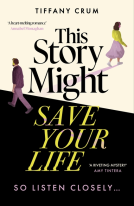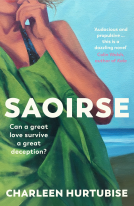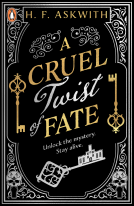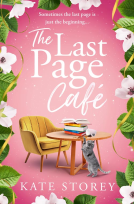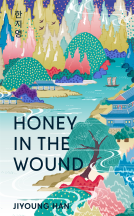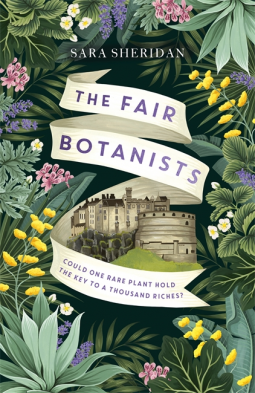
The Fair Botanists
Could one rare plant hold the key to a thousand riches?
by Sara Sheridan
This title was previously available on NetGalley and is now archived.
Send NetGalley books directly to your Kindle or Kindle app
1
To read on a Kindle or Kindle app, please add kindle@netgalley.com as an approved email address to receive files in your Amazon account. Click here for step-by-step instructions.
2
Also find your Kindle email address within your Amazon account, and enter it here.
Pub Date 5 Aug 2021 | Archive Date 5 Aug 2021
Talking about this book? Use #TheFairBotanists #NetGalley. More hashtag tips!
Description
'Compelling, fascinating . . . A cracking good read'
Val McDermid
'An evocative, enjoyable portrait of 1820s Edinburgh'
Sunday Times
'Lush, seductive'
Daily Mail
'Completely enchanting'
Scotsman
'A beautiful tale of scandal and intrigue'
Susan Stokes-Chapman, author of Pandora
***
Could one rare plant hold the key to a thousand riches?
It's the summer of 1822 and Edinburgh is abuzz with rumours of King George IV's impending visit. In botanical circles, however, a different kind of excitement has gripped the city. In the newly-installed Botanic Garden, the Agave Americana plant looks set to flower - an event that only occurs once every few decades.
When newly widowed Elizabeth arrives in Edinburgh to live with her late husband's aunt Clementina, she's determined to put her unhappy past in London behind her. As she settles into her new home, she becomes fascinated by the beautiful Botanic Garden which borders the grand house and offers her services as an artist to record the rare plant's impending bloom. In this pursuit, she meets Belle Brodie, a vivacious young woman with a passion for botany and the lucrative, dark art of perfume creation.
Belle is determined to keep both her real identity and the reason for her interest the Garden secret from her new friend. But as Elizabeth and Belle are about to discover, secrets don't last long in this Enlightenment city . . .
And when they are revealed, they can carry the greatest of consequences . . .
***
'Dazzling, original, full of wonderful characters' Katie Fforde
'An absolute treat for fans of historical fiction and rich storytelling' Red Magzine
'Lively and generous-hearted, with an array of utterly engaging characters, this enchanting novel reads like a warm tonic for the soul' Mary Paulson-Ellis
'As rare and lush as the Agave flower itself, The Fair Botanists is a richly realised, transportive delight' Rachel Rhys
'Beautiful . . . Every sentence is a gift. If you love The Doll Factory or The Binding, you'll love this' Miranda Dickinson
'Delightfully original, sensuous historical fiction, led by a charge of female characters as captivating and complex as the brightest of botanical flowers' Cari Thomas
Available Editions
| EDITION | Other Format |
| ISBN | 9781529336207 |
| PRICE | £16.99 (GBP) |
| PAGES | 384 |
Average rating from 64 members
Featured Reviews
It's the summer of 1822 in Edinburgh and King George IV might come for a visit in late summer. His right hand man, Johann is already there to oversee the possible programme of events which might take place. Also arriving is newly widowed Elizabeth Rocheid who has been invited to stay with her late husband's ageing Aunt Clementina at her home in Inverleith which borders the new Botanical Garden.
Much excitement is to be had with the move of the trees from the former gardens at Leith as well as the fact that the century plant - an Agave Americana is set to flower. The seeds have been promised to many and Head Gardener, Mr McNab is getting anxious. Elizabeth introduces herself and having drawn for Kew offers her services. She's over the moon about her new start and exciting adventures in Edinburgh.
Belle Brodie, is a beautiful young woman in charge of her own life, who apart from being a courtesan, has a keen interest in botany and creates and formulates perfumes and potions with the help of a promising young lad, Edzel, whom she's helping to get into medical school. She's also extremely interested in the blooms from the plant. I totally fell in love with fiery and determined Belle who knows exactly what she wants.
Belle and Elizabeth meet and form a firm friendship which has its good and bad times. Belle invites Elizabeth on a trip to Ratho (one which takes 2hrs there and back!) Blind Mhairi MacDonald also assists Belle with her big life changing project as she's got an uncanny sense of smell. I also liked how Elizabeth grows into her own as the story progresses.
It's a beautiful read with characters I grew to love, historical content I found interesting and I loved the real life characters whose lives are interwoven into the story. I absolutely loved this richly drawn and meticulously researched story and highly recommend it.
I absolutely loved The Fair Botanists. Set in 19th century Edinburgh when the New Town is being built, the city is preparing for a Royal visit from King George IV, and botanists are getting excited about the imminent flowering of the Agave Americana. This plant is known as the century plant and flowers only once every few decades. It's much sought after by many for varied reasons and many of the characters in this book have reason to want to get a hold of it's valuable flowers and seeds.
Sara Sheridan is passionate about writing women back into history and commemorating their achievements. So it's hardly surprising that she creates fantastic female characters in this book, from courtesan Belle Brodie who is passionate about the use of plants in perfumery (or perhaps I should say potions), to recently widowed botanical artist Elizabeth Rocheid relying on the kindness of her late husband's relatives, to blind Mhairi MacDonald who works for an Edinburgh whisky distiller. Belle was my favourite and I admired her determination to live life on her own terms regardless of what anyone else thought. Despite being the great grand-daughter of a duke, her circumstances meant that her life was far from that of nobility and, particularly as a woman, her life choices were limited. I enjoyed the mix of fictional characters alongside many real and notable Edinburgh citizens of the time.
I absolutely loved the 19th Century Edinburgh setting which is brought vividly to life by Sara Sheridan's vibrant descriptive writing. It's an Edinburgh which is recognisable to me and yet a growing Edinburgh with so many landmarks not yet part of the cityscape. Princes Street Gardens are still being developed from the recently drained Nor Loch, the National Monument on Calton Hill is in the planning stage and the Botanic Garden is completing its move from its original site in Leith Walk to its current location at Inverleith. I was really interested to learn that Constitution Street in Leith was built as a route to town which would bypass Leith Kirkgate as it was considered too dirty and beyond cleaning!
In my opinion, The Fair Botanists is Sara Sheridan's finest novel to date. It's a book that's clearly well researched and is so richly detailed. If you are a fan of historical fiction then don't miss this one. It's a beautifully written historical adventure, with feisty and memorable characters, secrets, a dash of romance, plenty drama and is such a satisfying read.
 Book B, Reviewer
Book B, Reviewer
Marvellous
A heart-felt story and one based on true fact.
Fascinating
Brings a bygone world back to life
Exquisite writing
Highly recommended
I loved this book – but then I am a keen gardener and plant afficionado and as it happens I collect agaves and aloes especially, of all succulents and exotic Mediterranean plants. Not cactii. But a few euphorbia. Preferably not too prickly! I do have an Agave Americana in my collection, and interestingly of all agave, these are now the most common, even though, to be honest, I have never seen one flower in a garden. I have seen them flower on Mediterranean mountain sides. The flower is not very exotic. Normally they grow a lot of offsets and propagation is through them. I have masses of grey agave from offsets.
I thought that the sensory discussion about smells having colours was interesting as this is a well known phenomena – people also have music colours and taste colours. And I liked the idea that smells produce emotions as people often associated perfume with a particular time, place, or person.
The setting up of the new Botanical Garden was fascinating. And how they transplanted the trees. In barrels. I always thought that they used sacking round the roots to transplant and to remove the soil. This was clearly a very different, and perhaps less brutal way, as the finer roots wouldn’t be damaged.
The argument over whether a botanical garden is for medicinal uses still ranges – especially now that we discover that many plants that were once thought to be ornamental – such as green beans – are now used for food; and others such as yew are used to extract (a cancer) drug from it called paclitaxel (Taxol), which is an antimitotic agent which stops cell division, resulting in cell death and this prevents cancer growth.
I knew about pineapples being a status symbol and that many wealthy plantation owners put a pineapple finial on their gates to indicate that they had grown them, but I was unaware about strawberries being a new plant. According to wikipedia, the garden strawberry was first bred in Brittany, France, in the 1750s via a cross of Fragaria virginiana from eastern North America and Fragaria chiloensis, which was brought from Chile by Amédée-François Frézier in 1714. Strawberry fragrance is extremely complicated – it has 31 elements that give it its flavour and scent and it is claimed to be useful in alleviating diabetes, high cholesterol, high blood pressure, and osteoarthritis.
I did like the idea of a bath oil to help alleviate period pains – the doctors all being male (at this time, and what about later researchers and grants?) would think that was nothing to concern themselves over. And so it has continued for many years. As has been said, if only male doctors got periods there would have been a cure for the pain and discomfort long ago! Today the use of oil for cramps is common in the complementary medical world, and they recommend: peppermint, lavender, cypress oil, clary sage, rose, copaiba, cinnamon, and bergamot peel, roman chamomile flower, ylang-ylang, cedarwood, geranium, fennel seed, carrot seed, palmarosa herb, and vitex leaf berry, not to mention siberian fir. So there is a large number of essential oils that can help and special blends are available.
So what did I think of the book apart from all this wonderful plant knowledge? I loved it. I thought it very clever the way the various stories about the people of Edinburgh were blended into the story of the Botanical garden move and the excitement over a unique flower and other special, and new to that time, plants. The style was good and easy to read as well as being informative. We well understood that this was a blend of historical facts and fiction. The visit in 1822 of the Prince Regent to Edinburgh was real. Sir Walter Scott and his insistence on tartan for the dress code elevated the fabric to become again symbol of identity – as it had been forbidden after the Jacobite Rising.
My first novel by Sara Sheridan, but definitely not my last. I have enjoyed The Fair Botanists from beginning to end. Excellent pace, wonderful characters, interesting setting.
Edinburgh, 1822 - a number of lives are brought into contact around the moving (yes, moving!) Botanical Gardens. I had to read twice the opening paragraph, so operatic and weird (it did make quickly total sense, such an exciting, REAL historical event!) and a most satisfying narrative ensues in which women take centre-stage: a talented and bruised young widow, a creative and quirky courtesan, an old shrewd aristocrat, an enterprising Gael young woman... and of course a whole retinue of male characters: from the very real Sir Walter Scott, and the Garden´s director (Mr Graham) and head gardener (Mr McNab), to the fictional King´s envoy Mr von Streitz. George IV´s impending real trip to Scotland is a central element of the storyline which also revolves around an exotic plant and its flowering.
Descriptions are precise, evocative: places (streets, shops, mansions, lab huts...) are conjured with a real sense of space and their reality (furnishings, light, smell) as are dresses and food! Characters well drawn and their speech and dialogue makes them truly individual. Back stories are just suggested intelligently - there is no superfluous, boring material. This is an exciting look at the city of Edinburgh at a moment of change and modernisation through a series of characters and events which make this a very fine, intelligent and fun entertainment. Totally recommend it.
Much thanks to Hodder & Stoughton via NetGalley for allowing me to read and review this APC.
 Reviewer 482147
Reviewer 482147
This is an absolute gem of a novel. I haven’t read any Sara Sheridan books before and I must admit I didn’t know what to expect. Set in 1820’s Edinburgh against the background of the King’s visit and a rare plant in the Botanic Gardens which will flower only once. With a rich cast of characters the strains of the book are skilfully woven together. I’m not a gardening lover at all but the botanical descriptions were captivating. I absolutely loved it.
 Kirsty C, Reviewer
Kirsty C, Reviewer
This is one of the best historical novels I have read, and being a woman who lives in Edinburgh and who used to work for the Botanics, this was one I was likely to judge harshly knowing a lot of the history of the Garden’s move to Inverleith.
But Sara Sheridan’s latest novel is everything I love about Elizabeth Gilbert’s The Signature of All Things, with a bit of Les Liaisons Dangereuses. It wraps together the lives of two women who otherwise would find themselves destitute in the man’s world of 1820s Georgian Edinburgh, but who find their own way to make their way in the world - and to make best friends with the other.
Light, thoughtful, clever, romantic, with a dash of botany. One I will be buying for everyone I know who l loves books centering women, plants and Edinburgh.
 Irene C, Reviewer
Irene C, Reviewer
I really enjoyed this historical Edinburgh-based novel, more so because I look over from Fife every day and am familiar with the areas that Sara writes about. I learned so many new facts from this novel - I had no idea that the Botanic Garden had been moved from Leith Walk to it’s present setting in the New Town at Inverleith and the description of how this was achieved was riveting. Sara Sheridan has written a heart warming tale of love, intrigue and botany with strong women at its centre - a real pick-me-up to boost your mood in challenging times.
Perfectly paced, romantic and full of intrigue, The Fair Botanists is a truly wonderful story where women take centre stage. Set against the lush backdrop of the Royal Botanical Gardens in Edinburgh, Sheridan has created a vibrant, vivid world to disappear into.
The writing is exquisite, and reminded me of Michel Faber's The Crimson Petal and the White. The theme of the rare (at the time) plant which flowers only once, and what ultimately happens to it, is cleverly done, showing Belle to be a woman who is truly in control of her own life. Women in 19th century Scotland had more freedom than in other parts of the UK, and Sheridan shows how each of the female characters take control of their lives, but it is not without difficulty or danger. Each character is richly drawn and full of life, and though Belle was undoubtedly my favourite, Mhairi also stands out as a strong, colourful woman. I would love to read more of her and her journey.
 Sandra R, Reviewer
Sandra R, Reviewer
Thanks to NetGalley for an advance copy of the latest book by Sara Sheridan.
The book is set in Edinburgh and features 3 very different women as the main characters ....Lady Clementine - an elderly lady and cousin to Elizabeth's late husband, and Belle - a courtesan and grand-daughter of a duke....
The book is based on the move of the botanical gardens and is featured around the rare flowering of the Agave Americana.... lots of twists to the tale to keep the reader interested.
For readers of historic fiction, this is a must for your summer reading list!
#sarasheridan #netgalley #thefairbotanists
 Lynne P, Reviewer
Lynne P, Reviewer
I started reading this book with a serious book hangover but it didn’t last long as this book turned out to be the very best cure. I can’t explain enough how much I loved this book, other than to say if you enjoy historical fiction or just good fiction then you’ll love this too.
The writing of this story and the characters instantly endeared themselves to me. The story is smart, funny, and charming. It is a historical novel full of heart. I really did love all the characters, this doesn’t mean they’re all lovely though! But they are all so very good. This story is an incredibly well crafted tale that weaves together a whole host of characters including historical characters, events, and multiple misunderstandings in to one very good story.
 Evelyn L, Educator
Evelyn L, Educator
As a keen gardener and a native of Edinburgh,I was instantly hooked by this story of the creation of the Royal Botanic Garden at Inverleith ,set in 1822 when the city was preparing for the visit of George IV.There is so much period detail ,with a cast of characters from fictional to real people, and the detailed notes at the end give a lot of extra information.
Highly recommended-I couldn’t put it down!
Thanks to the publisher and NetGalley for an ARC in return for an honest review which reflects my own opinion.
In the summer of 1822, amasses of trees seem to move through Edinburgh town centre, ready to root themselves in the new, sumptuous Botanical Gardens. Mr McNab runs the glorious gardens and is especially proud of the rare Agave Americana aloe that looks set to flower – an event which only occurs once in a century. Elizabeth, newly widowed and ready for a new adventure, arrives at the house of Clementina, her late husband’s aunt. She is soon drawn towards the beauty and allure of the Botanical Gardens and as a keen artists she positions herself as the flower’s official portrait maker. Belle Brodie is a high-end courtesan who has a secret passion for botany and the art of perfume creation. She hopes to create the perfect love potion that will cement her fortune. Will the Botanical Gardens give both women a fresh sense of purpose? Or will their secrets lay them exposed and bare?
The whole of Edinburgh waits with baited breath for the American aloe plant to flower. The fate of the characters rests on the successful outcome of the plant. Mr McNab up to his knees in debt is relying on the sale of the aloe’s seeds to feed and clothe his family. Miss Brodie whose current ladies bathing oil is a roaring success at the apothecary; is relying on the aloe’s flowers as the secret ingredient to the success of her new love potion. Elizabeth is relying upon the aloe’s blooms to symbolise and herald hope and happiness for her future. Add into the mix the impending arrival of King George III, everyone pulls together to try to make the visit triumphant and perhaps bring fresh, new and much needed investors to the Botanical Gardens.
Elizabeth is my favourite character, we watch her slowly grow into her own newfound independence across the novel, no longer kept in the shadows by her husband. She attracts the attention of the king’s advisor and soon she is able to imagine a world tinted by the soft glow of romance. My second favourite character is Mhairi MacDonald who works at the whiskey distillery and has increased its profits tenfold with her heightened sense of smell – to compensate for her blindness. Miss Brodie wonders if this special girl might be able to help her concoct her love potion and increase its potency.
When the 23 foot aloe finally flowers – will Mr McNab’s secret dealings be exposed? Will Belle gain the scent she desires? Will Elizabeth find her future fortunes in its golden blooms?
An ARC was gifted via NetGalley for an honest review.
 Melissa J, Librarian
Melissa J, Librarian
Superb storytelling, intriguing characters, and an atmospheric setting- The Fair Botanists by Sara Sheridan was a delight to read!
Set in beautiful Edinburgh in the summer of 1822, when the city is preparing for the royal visit from the King, Sheridan centres the action around the Botanic Gardens, moving to its new home at Inverleith, and the flowering of an exotic aloe plant that only blooms every 30 years.
One of my favourite parts about the novel was its female characters who are shown to have skills, interests and passions that often get overlooked or derided by the male dominated society. I loved how the stories and lives of the characters intertwined and Sheridan does a fantastic job of making the reader feel fully immersed in the world she has created.
I think the novel would make a brilliant TV series, and I will definitely be recommending this book to others- loved it!
 Andrea H, Book Trade Professional
Andrea H, Book Trade Professional
My thanks to Sara Sheridan, Hodder and Stoughton and Net Galley for the ARC of THE FAIR BOTANISTS. I love Edinburgh, I love historical fiction. I love horticulture. I really loved this novel. Beautifully written with loads of interesting stuff. My favourite character far and away was Belle Brodie, a woman with her own mind, naughty, irreverent, and willing to take risks to secure her future. Fab.
Readers who liked this book also liked:
Elizabeth Arnott
General Fiction (Adult), Historical Fiction, Mystery & Thrillers
Carine Laforest;
Children's Fiction

